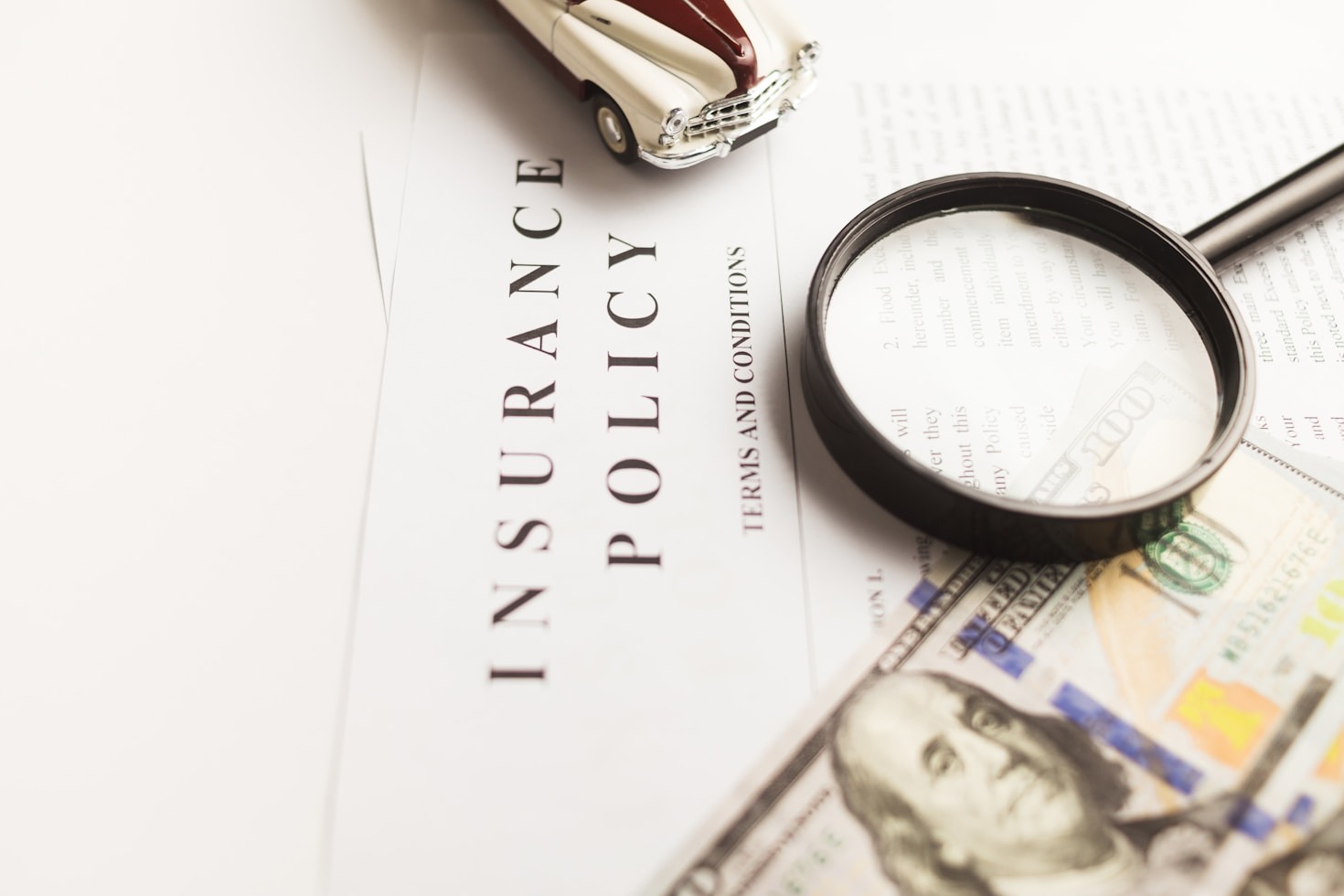When shopping for car insurance, you’ll often hear the term “full coverage insurance.” But what does it really mean? Unlike liability insurance, which only covers damages you cause to others, full coverage insurance provides a wider umbrella of protection for both you and your vehicle.
In this comprehensive guide, we’ll break down what full coverage insurance is, what it includes, how much it costs, who needs it, and whether it’s worth it. By the end, you’ll have a clear understanding of how full coverage works and whether it’s the right choice for you.
1. What Is Full Coverage Insurance?
The term “full coverage insurance” doesn’t refer to a specific policy you can buy. Instead, it’s an industry phrase that describes a combination of coverages that go beyond the state-required minimum liability insurance.
At its core, full coverage auto insurance typically includes:
-
Liability insurance – Covers injuries or damages you cause to others.
-
Collision coverage – Pays to repair or replace your own car after an accident.
-
Comprehensive coverage – Protects your car from non-collision events like theft, fire, vandalism, or natural disasters.
Some insurers also include uninsured/underinsured motorist coverage and medical payments (MedPay) or personal injury protection (PIP) as part of what’s commonly called “full coverage.”
2. What Does Full Coverage Insurance Include?
Full coverage is a mix of several types of car insurance. Let’s look at each component in detail:
2.1 Liability Insurance
-
Covers bodily injury and property damage you cause to others in an accident.
-
Does not cover your own injuries or vehicle.
-
Required in almost every state.
2.2 Collision Coverage
-
Covers repairs to your car if it’s damaged in a crash with another vehicle or object (like a tree or guardrail).
-
Pays for damages even if you’re at fault.
2.3 Comprehensive Coverage
-
Covers non-collision damages, such as:
-
Theft
-
Vandalism
-
Fire
-
Natural disasters (flood, tornado, hail)
-
Falling objects (tree branches, debris)
-
Hitting an animal (like a deer)
-
2.4 Uninsured/Underinsured Motorist (UM/UIM)
-
Covers you if you’re hit by a driver who has no insurance or insufficient insurance.
2.5 Medical Payments or Personal Injury Protection (PIP)
-
Covers medical bills for you and your passengers regardless of fault.
-
In some states, PIP is required under no-fault insurance laws.
3. What Is Not Included in Full Coverage Insurance?
While full coverage insurance provides broader protection, it doesn’t cover everything. For example:
-
Regular wear and tear (brake pads, tires, oil changes)
-
Mechanical breakdowns (unless you add mechanical breakdown insurance)
-
Rideshare driving (unless you add rideshare coverage)
-
Commercial/business use of your vehicle
-
Luxury items or aftermarket modifications (unless scheduled separately)
So while the phrase “full coverage” sounds like total protection, it doesn’t literally cover every possible scenario.
4. How Much Does Full Coverage Insurance Cost?
The cost of full coverage insurance varies widely depending on multiple factors:
-
Location – Rates are higher in urban areas with more traffic and higher theft rates.
-
Driving record – Accidents, DUIs, or speeding tickets increase your premium.
-
Vehicle type – Newer, luxury, or high-performance cars are more expensive to insure.
-
Age & gender – Younger drivers usually pay more.
-
Credit score – In many states, lower credit scores lead to higher insurance costs.
-
Deductibles – Higher deductibles lower your premium but increase out-of-pocket costs after a claim.
👉 On average in the U.S., full coverage insurance costs between $1,500 and $2,500 per year, compared to about $600–$800 for liability-only coverage.
5. Who Needs Full Coverage Insurance?
Full coverage insurance is not legally required in most states, but it may be required by lenders or leasing companies. You should consider full coverage if:
-
You finance or lease your car (lenders usually mandate it).
-
Your car is new or valuable and expensive to repair or replace.
-
You live in an area with high rates of car theft, vandalism, or severe weather.
-
You want peace of mind knowing your own car is covered after an accident.
But, if your car is old and worth less than the cost of coverage, you might save money by dropping collision and comprehensive.
6. Full Coverage vs. Liability-Only Insurance
| Feature | Liability Insurance | Full Coverage Insurance |
|---|---|---|
| Covers others’ injuries/damages | ✅ Yes | ✅ Yes |
| Covers your car in an accident | ❌ No | ✅ Yes (collision) |
| Covers theft, fire, vandalism, natural disasters | ❌ No | ✅ Yes (comprehensive) |
| Required by state law | ✅ Yes | ❌ No |
| Cost | Lower | Higher |
In short, liability-only protects others, while full coverage protects you and your car as well.
7. Pros and Cons of Full Coverage Insurance
✅ Pros
-
Protects your car in more situations (accidents, theft, natural disasters).
-
Required by lenders if you finance/lease.
-
Peace of mind for newer or valuable cars.
❌ Cons
-
More expensive than liability-only.
-
May not be cost-effective for older, low-value cars.
-
Doesn’t literally cover everything (e.g., wear and tear, commercial use).
8. How to Save Money on Full Coverage Insurance
If you decide full coverage is right for you, here are ways to reduce your premium:
-
Increase deductibles (but only what you can afford).
-
Bundle policies (home + auto).
-
Maintain a clean driving record.
-
Shop around – get quotes from multiple insurers.
-
Ask about discounts (safe driver, good student, anti-theft devices).
-
Improve your credit score if your state allows insurers to use credit.
9. Common Myths About Full Coverage Insurance
❌ Myth 1: Full coverage covers everything.
Truth: It doesn’t cover wear and tear, mechanical failures, or commercial driving.
❌ Myth 2: Full coverage is always required.
Truth: Only liability coverage is legally required; full coverage is usually required only if you lease or finance.
❌ Myth 3: My insurance will pay off my loan if my car is totaled.
Truth: Not necessarily—unless you add gap insurance, which covers the difference between your loan balance and your car’s value.
FAQ: What Is Full Coverage Insurance?
Choosing the right auto insurance can be confusing. Many drivers hear the term “full coverage insurance” and assume it covers everything—but that’s not exactly true. Below is a comprehensive FAQ with detailed answers to help you fully understand what full coverage insurance means, what it includes, how much it costs, and whether you really need it.
1. What is full coverage insurance?
Full coverage insurance isn’t a single policy you can buy. Instead, it’s a combination of coverages that go beyond your state’s least liability requirements. Typically, full coverage includes:
-
Liability insurance (covers damages you cause to others).
-
Collision insurance (covers your own car after an accident).
-
Comprehensive insurance (covers non-collision events like theft, fire, or natural disasters).
So when people say “full coverage,” they usually mean they have liability, collision, and comprehensive coverage bundled together.
2. Does full coverage insurance cover everything?
No. The name is misleading. Full coverage does not cover:
-
Routine maintenance (oil changes, brakes, tires).
-
Mechanical breakdowns (unless you add mechanical breakdown insurance).
-
Commercial use (like rideshare or delivery driving).
-
Personal items stolen from your car (covered under renters/homeowners insurance instead).
It’s “full coverage” only in the sense that it combines several key protections.
3. What does full coverage insurance include?
Most full coverage policies include:
-
Liability insurance – Pays for injuries or property damage you cause.
-
Collision insurance – Covers your car after a crash, even if you’re at fault.
-
Comprehensive insurance – Protects against theft, vandalism, natural disasters, or hitting an animal.
-
Optional extras – Such as uninsured motorist coverage, roadside help, or gap insurance (varies by insurer).
4. How much does full coverage insurance cost?
The cost depends on many factors, including your driving record, car type, location, and age. On average:
-
Liability-only insurance: $600–$800 per year.
-
Full coverage insurance: $1,500–$2,500 per year.
Adding collision and comprehensive coverage roughly doubles your premium compared to liability-only.
5. Do I need full coverage insurance?
It depends. You should consider full coverage if:
-
You finance or lease your car (lenders usually need it).
-
You own a new or expensive car.
-
You live in an area with high theft, vandalism, or extreme weather risks.
-
You want extra financial protection after an accident.
If your car is old and worth less than the cost of the coverage, you might not need it.
6. Is full coverage insurance required by law?
No. States only need liability insurance (with least coverage amounts). Full coverage is optional unless required by your lender or leasing company.
7. What is the difference between full coverage and liability-only insurance?
-
Liability insurance: Covers only damages you cause to others.
-
Full coverage insurance: Covers liability, plus your own car through collision and comprehensive coverage.
Liability protects others, while full coverage protects both others and you.
8. Does full coverage insurance cover rental cars?
In many cases, yes. Full coverage often extends to rental cars for personal use. However, coverage may vary by insurer, so always check your policy before declining rental car insurance.
9. Does full coverage insurance cover theft?
Yes, if you have comprehensive coverage included in your policy. Comprehensive covers theft of your vehicle, as well as damage from vandalism, fire, or natural disasters.
10. Does full coverage insurance cover hitting an animal?
Yes. If you hit a deer, dog, or any other animal, comprehensive coverage applies. Collision coverage typically doesn’t apply in animal strike cases.
11. Does full coverage insurance cover flood or hail damage?
Yes, if you have comprehensive coverage. Natural disasters such as hailstorms, floods, tornadoes, or hurricanes fall under comprehensive protection.
12. How do deductibles work with full coverage insurance?
A deductible is the amount you pay out of pocket before insurance kicks in.
-
If you have a $500 deductible and your repair bill is $2,000, you pay $500 and your insurer pays $1,500.
-
Higher deductibles lower your premium, but you’ll pay more in the event of a claim.
13. Is full coverage worth it for an older car?
Usually not. If your car is worth less than $2,000–$3,000, the cost of collision and comprehensive coverage may outweigh the potential payout after a claim. In such cases, liability-only might make more sense.
14. What is the difference between comprehensive and collision coverage?
-
Comprehensive: Non-collision events (theft, natural disasters, fire, vandalism, animal strikes).
-
Collision: Accidents involving another vehicle or object (trees, poles, guardrails).
Both are needed for true “full coverage.”
15. How can I lower the cost of full coverage insurance?
-
Raise your deductibles.
-
Bundle auto with home or renters insurance.
-
Ask for discounts (safe driver, good student, anti-theft device).
-
Shop around and compare quotes annually.
-
Maintain a good driving record and credit score.
16. Does full coverage insurance pay off my car loan if it’s totaled?
Not necessarily. Insurance pays only the car’s current market value. If you owe more than the car is worth, you’ll need gap insurance to cover the difference between your loan balance and the settlement.
17. Does full coverage insurance cover medical bills?
It depends. Some full coverage policies include Medical Payments (MedPay) or Personal Injury Protection (PIP). These cover medical bills for you and your passengers regardless of fault. Check your policy to confirm.
18. Does full coverage insurance cover other drivers using my car?
Yes, usually. If you give someone permission to drive your car, your full coverage typically applies. However, some restrictions exist for household members not listed on the policy or for commercial use.
19. What’s the biggest myth about full coverage insurance?
The biggest myth is that full coverage protects you in every possible situation. In reality, it doesn’t cover mechanical issues, regular maintenance, or situations like ridesharing unless you add special coverage.
20. When should I drop full coverage insurance?
You might drop it when:
-
Your car’s market value is very low.
-
The cost of full coverage exceeds 10% of your car’s value.
-
You could afford to replace the car out of pocket.
At that point, liability-only may be the smarter financial choice.
Final Thoughts
So, what is full coverage insurance? It’s not a single policy but rather a combination of liability, collision, and comprehensive coverage that protects you, your car, and others on the road. While it costs more than liability-only insurance, it provides peace of mind for newer or financed vehicles.
By understanding what full coverage does and doesn’t include, you can make an informed choice about whether it’s right for you. Always review your policy carefully, compare quotes, and consider your car’s value before deciding on coverage.
So, what is full coverage insurance? It’s not a specific type of policy but rather a bundle of protections—liability, collision, and comprehensive—that safeguard both you and your car. While it costs more than liability-only, full coverage offers peace of mind, especially if you have a new or valuable car.
Whether full coverage is right for you depends on your car’s value, your financial situation, and your personal risk tolerance. By understanding what it includes, what it doesn’t, and how to save on premiums, you can make the best decision for your auto insurance needs.





Pingback: Does Renters Insurance Cover Bike Theft?